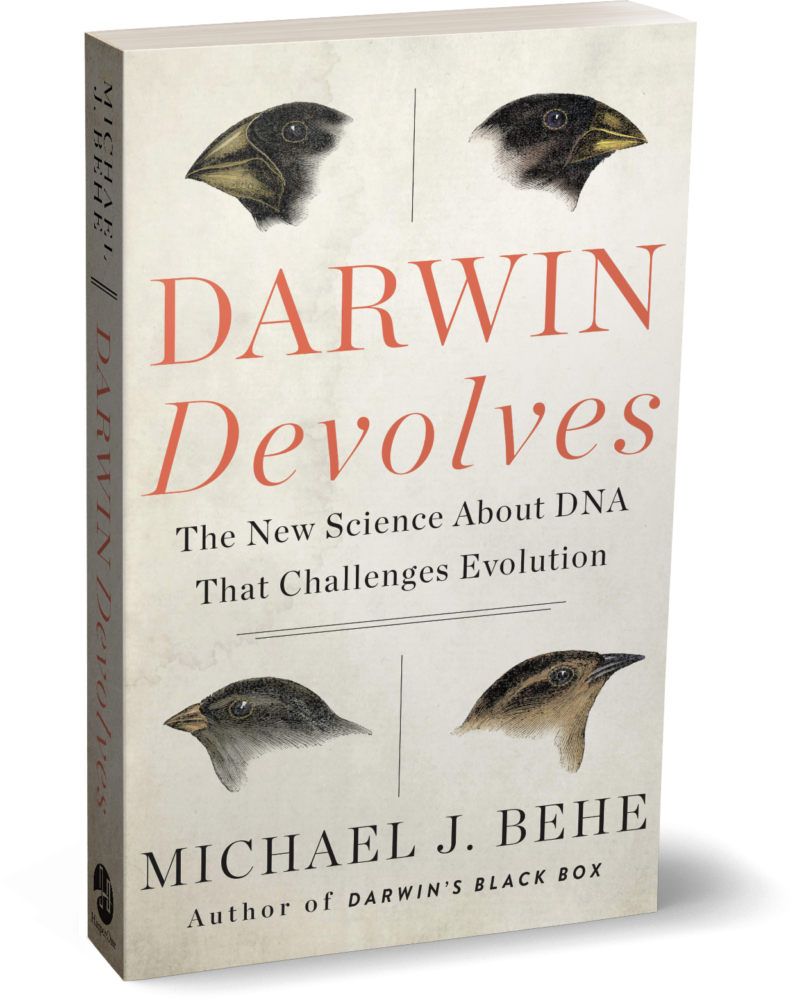Evidence Keeps Rolling In
Published at Evolution NewsSeveral new papers have appeared that reinforce key points of my recent book, Darwin Devolves. (Hat tip to Paul Nelson.) The first one — “Quantifying the pathways to life using assembly spaces” — is from a group of theoreticians at Arizona State and the University of Glasgow. (The work was discussed by one of the authors, Sara Imari Walker, at a meeting this July in Italy, “Mind Matters: Intelligence and Agency in the Physical World.” Walker is a frequent collaborator of Paul Davies.)
Reeking of ID
The paper investigates phenomena that reek of intelligent design, but the authors ascribe design either to an extrinsic agent or to (presumably undirected) evolution.
Herein, we present the foundations of a new theoretical approach to agnostically quantify the amount of potential pathway assembly information contained within an object. This is achieved by considering how the object can be deconstructed into its irreducible parts, and then evaluating the minimum number of steps necessary to reconstruct the object along any pathway. … This allows determining when an extrinsic agent or evolutionary system is necessary to construct the object …
Their only gesture at justifying the mythic powers ascribed to mutation and selection is to cite a single, decade-old, semi-theoretical, non-experimental paper. The authors hope that their work will “help identify the new physical and chemical laws needed to understand what life is, by quantifying what life does.” Well, it would be great if they could indeed reliably identify biological objects whose assembly is beyond random processes. But, as I documented in Darwin Devolves, no sign of a mysterious new mind-like law was seen in Richard Lenski’s evolution experiments, or the development of chloroquine resistance by the malaria parasite, or any of the best relevant data from other work. Maybe there is no such law.
“A Type of Intelligent Design”

The emphasis on discovering unimagined new laws to explain construction of an object seems to reflect the same viewpoint as seen in a slide by another participant in the Mind Matters conference, Susan Schneider of the University of Connecticut. On the slide she defines “Mind design — a type of intelligent design. But we humans, not God, are the designers.” Yet the a priori elimination of a possible explanation — real design — that is forcefully suggested by the actual biological data is terrible scholarship.
The second paper is an in-depth look at genetic changes associated with the evolution of the cetacean (whales and dolphins) lineage. This is the kind of amazing work that is now possible in our brave new world of relatively easy genome sequencing. The authors compared the genomes of a half dozen different cetacean species to scores of other mammalian genomes. So did they find some jazzy new cetacean molecular machinery? Or complex, constructive changes in the whale genome to explain its fantastic change in shape and lifestyle?
Well, no. They found a lot of devolution.
We found 85 gene losses. Some of these were likely beneficial for cetaceans, for example, by reducing the risk of thrombus formation during diving (F12 and KLKB1), erroneous DNA damage repair (POLM), and oxidative stress–induced lung inflammation (MAP3K19). Additional gene losses may reflect other diving-related adaptations, such as enhanced vasoconstriction during the diving response (mediated by SLC6A18) and altered pulmonary surfactant composition (SEC14L3), while loss of SLC4A9 relates to a reduced need for saliva. Last, loss of melatonin synthesis and receptor genes (AANAT, ASMT, and MTNR1A/B) may have been a precondition for adopting unihemispheric sleep. Our findings suggest that some genes lost in ancestral cetaceans were likely involved in adapting to a fully aquatic lifestyle.
Adaptation by Breaking Things
A couple of points:
- At least 85 changes — and probably many more — were needed for whale evolution. That’s a whole lotta intermediates that somehow didn’t get stuck in adaptive dead ends, or persist for very long.
- As I explain in Darwin Devolves, adaptation by breaking or blunting genes is expected to be very much faster than constructive evolution, so it should dominate all evolutionary time scales. As the current paper helps to show, the evidence for that is growing. Not only is devolution the dominant mode in microevolution we observe in real time in lab experiments today, but also in the macroevolutionary change that we infer from genome sequences over geological ages — punctuated by bursts of new information. There is no hint of significant, constructive Darwinian molecular changes at any time scale.
